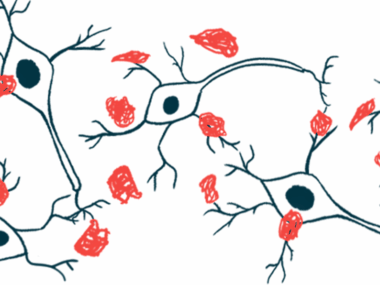Scientists discover how PINK1 pathway activates to protect cells
Findings could aid development of Parkinson’s treatments
Written by |

Scientists at the University of Dundee in Scotland said they have uncovered the mechanisms behind the activation of the PINK1 protein, an enzyme that protects the brain against nerve cell degeneration and the development of Parkinson’s disease.
They discovered how PINK1, which detects damage in mitochondria — the cell’s powerhouses — is stabilized and activated at the mitochondrial membrane by interacting with a complex known as the translocase of outer membrane (TOM).
“Our new findings add to a number of emerging treatment strategies targeting the PINK1 pathway, some that are now entering clinical trials for Parkinson’s patients this year,” Miratul Muqit, MD, PhD, neurologist at the university’s MRC-Protein Phosphorylation and Ubiquitylation Unit and lead author of the study, said in a university press release. “This work provides a framework to undertake future studies directed at finding new drug-like molecules that can target PINK1.”
The study, “Mechanism of human PINK1 activation at the TOM complex in a reconstituted system,” was published in Science Advances.
Parkinson’s disease is caused by the progressive dysfunction and death of nerve cells responsible for making dopamine, called dopaminergic neurons. Dopamine is a neurotransmitter, or a chemical neurons use to communicate with each other. The exact causes that trigger the loss of these neurons are not known, but several variables, including genetic mutations and environmental factors, are thought to be involved.
Building on previous research
Loss-of-function mutations in the PKN1 gene have been associated with early-onset Parkinson’s: The gene provides instructions to produce PINK1, an enzyme that detects mitochondrial damage, which is common in Parkinson’s. Mitochondria play a key role in neuronal functioning.
In previous research, the team had found that PINK1 was pivotal to protect brain cells from damage, by switching on a protective pathway through the targeting of two key proteins, ubiquitin and Parkin. But they didn’t know how PIKN1 was activated.
The team had also discovered that in patients carrying PKN1 mutations, the protective effect was lost, which contributed to the degeneration of neurons associated with movement control and led to Parkinson’s symptoms.
In the latest study, the researchers showed that PINK1 is activated by binding to key parts of the TOM complex at the surface of mitochondria, enabling it to exert its neuroprotective action. Mitochondria depend on the TOM complex for bulk protein import, a process essential for the transport of proteins into mitochondria, maintaining their functionality and integrity.
Researchers engineered Saccharomyces cerevisiae, a type of yeast, to express PINK1 and seven subunits of the TOM complex, finding that this was sufficient to trigger PINK1 activation.
They demonstrated that specific subunits of the TOM complex, TOM20 and TOM70, are required for the optimal activation of PINK1. The team then used AlphaFold, an artificial intelligence system that predicts the three-dimensional structure of proteins, to map the interactions between these subunits and PINK1.
TOM40, the complex subunit that forms a pore through which proteins are transported, was essential for PINK1 activation, as well as its structurally associated subunits TOM7 and TOM22.
“This is bold and painstaking molecular research which allows us to better understand the biology that underlies Parkinson’s disease, and provides new ideas on how PINK1-controlled Parkinson’s disease could be better diagnosed and treated, opening the door for further important research,” said Dario Alessi, PhD, director of the MRC unit.
The scientists said their work “provides insights into human PINK1 activation that will be of utility in the development of small-molecule activators as a therapeutic strategy against” Parkinson’s.
The research was funded by the Wellcome Trust, Aligning Science Across Parkinson’s, The Michael J. Fox Foundation for Parkinson’s Research, and the Medical Research Council. It involved an international, multi-center collaboration with researchers in the U.K., Germany, and the Netherlands.






